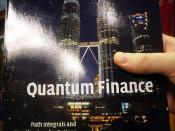HedgingRisk can be defined as any variation from an expected outcome. So, if an investor does not receive any expected returns, he may call it a "risk" (Stein, 1961). The risk can be reduced by taking a position opposite to spot and the future markets simultaneously, so that any loss sustained from an adverse price movement in one market should to some degree be offset by a favourable price movement in the other. This is known as hedging. To reduce risk, the hedger determines a hedge ratio, i.e. the number of futures contracts to buy or sell for each unit of spot commodity on which he bears price risk. Like any other derivative, futures contracts can be used as an insurance against unfavourable price fluctuations (Johnson, 1960). The hedge ratio which minimizes the variance of the returns of a portfolio containing the spot and the future positions is known as the optimal hedge ratio.
The quest for better hedge has been the motive for sophisticated risk management and hedging techniques. Therefore, it is important for the hedger to select an appropriate model for reliable estimates of the optimal hedge ratios and knowledge of the distribution of the cash and the future prices.
Initially, the prices were assumed to follow a random walk with price changes being identically and independently distributed (Bachelier, 1990). However, many stock index and commodity price changes appeared not to be independent but rather to be characterized by quiet and volatile periods as variances change over time, following Mandelbrot (1963) and Fama (1965). The unconditional distributions of price changes were also found to be fat-tailed, or leptokurtic. Consequently, researchers began describing price changes with non-normal distributions, such as the stable Paretian (Gordon, 1985). Therefore, knowledge of the distribution of cash and future prices is crucial in constructing...


